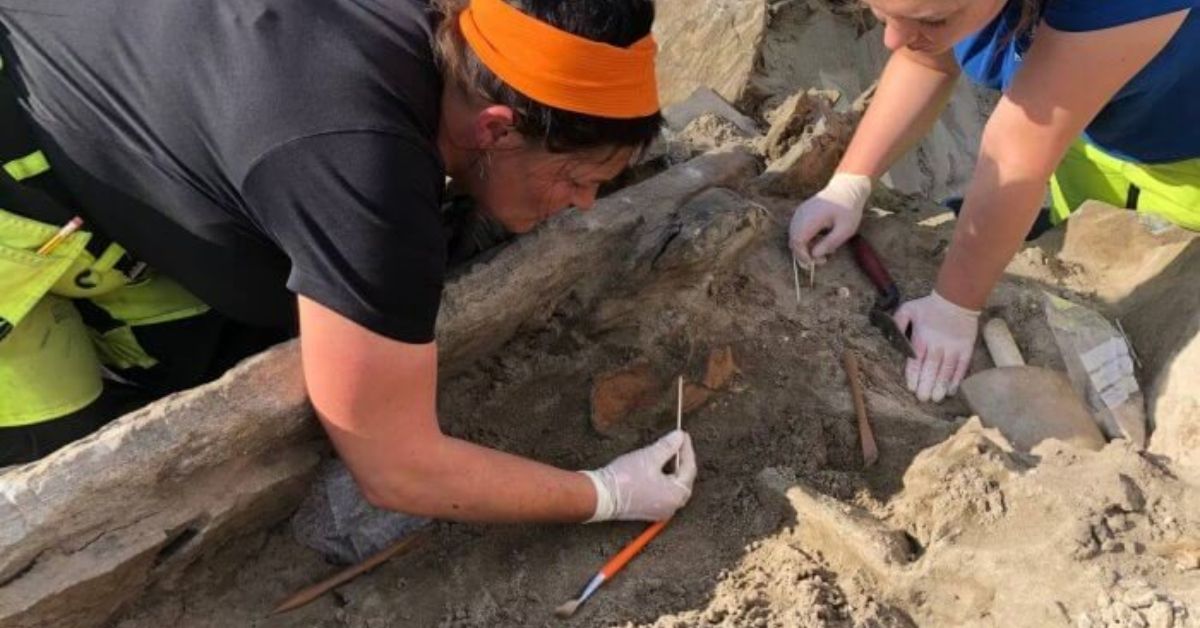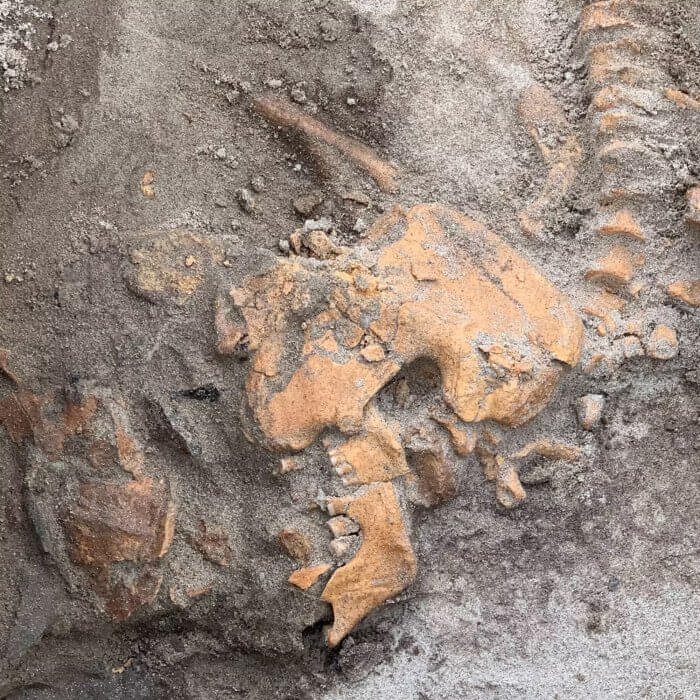In a groundbreaking discovery, archaeologists in Western Norway have unearthed a 4,000-year-old stone box grave, marking a significant milestone in the study of Norway’s Stone Age history. The grave, identified as a ‘hellekistegrave’ or stone box grave, is a unique find not only for its age but also for its location, providing valuable insights into the region’s ancient past.
Situated south of Vestkapp in Selje, Vestland, the grave measures an impressive four meters in length and over two meters in width, making it a substantial archaeological find. Morten Ramstad, from the antiquities section at the University of Bergen, describes it as the most unique Stone Age discovery in Norway in the last century.
What makes this discovery particularly noteworthy is the type of burial site found. Hellekistegraves, or stone box graves, were previously known to exist in Buskerud, Østfold, and Denmark but had never been documented in Western Norway. This variation in burial practices raises questions about the cultural and historical significance of the region during the Stone Age.

The researchers believe that the grave may hold crucial information about the introduction of agriculture to Western Norway. Agriculture, which first appeared in Norway around 3950 BC, played a pivotal role in the transition from hunter-gatherer societies to settled communities. Understanding how and when agriculture reached Western Norway could provide key insights into the region’s societal evolution.
The exceptionally well-preserved human bone material discovered at the site is a treasure trove for researchers. It opens up the possibility of determining the ages of the individuals buried, their places of origin, and the methods of transportation to Western Norway. This level of preservation is rare and offers a unique opportunity to delve into the lives of the people from the distant past.
To contextualize the discovery, it’s essential to consider the historical timeline. The first inhabitants of Norway, migrating north around 10,000 years ago after the retreat of ice sheets, were hunter-gatherers relying on seafood and game for sustenance. The advent of agriculture, between 5,000 and 4,000 BC around the Oslofjord, marked a significant shift in lifestyle.

The Neolithic period, commencing in 4000 BC, ushered in the era of agriculture in Norway. Subsequent periods saw the establishment of chieftains, the construction of hilltop forts during the Migration Period, and Norwegian expansion to the British Isles and beyond during the Viking Age.
The discovery of the 4,000-year-old stone box grave in Western Norway contributes to our understanding of the region’s agricultural history. The potential wealth of information contained within the well-preserved grave could reshape our knowledge of ancient societies and their journey from hunter-gatherer lifestyles to settled agricultural communities.
As researchers continue their analysis, this find promises to unlock new chapters in Norway’s prehistoric narrative, shedding light on the cultural, social, and economic dynamics that shaped Western Norway over four millennia ago.





